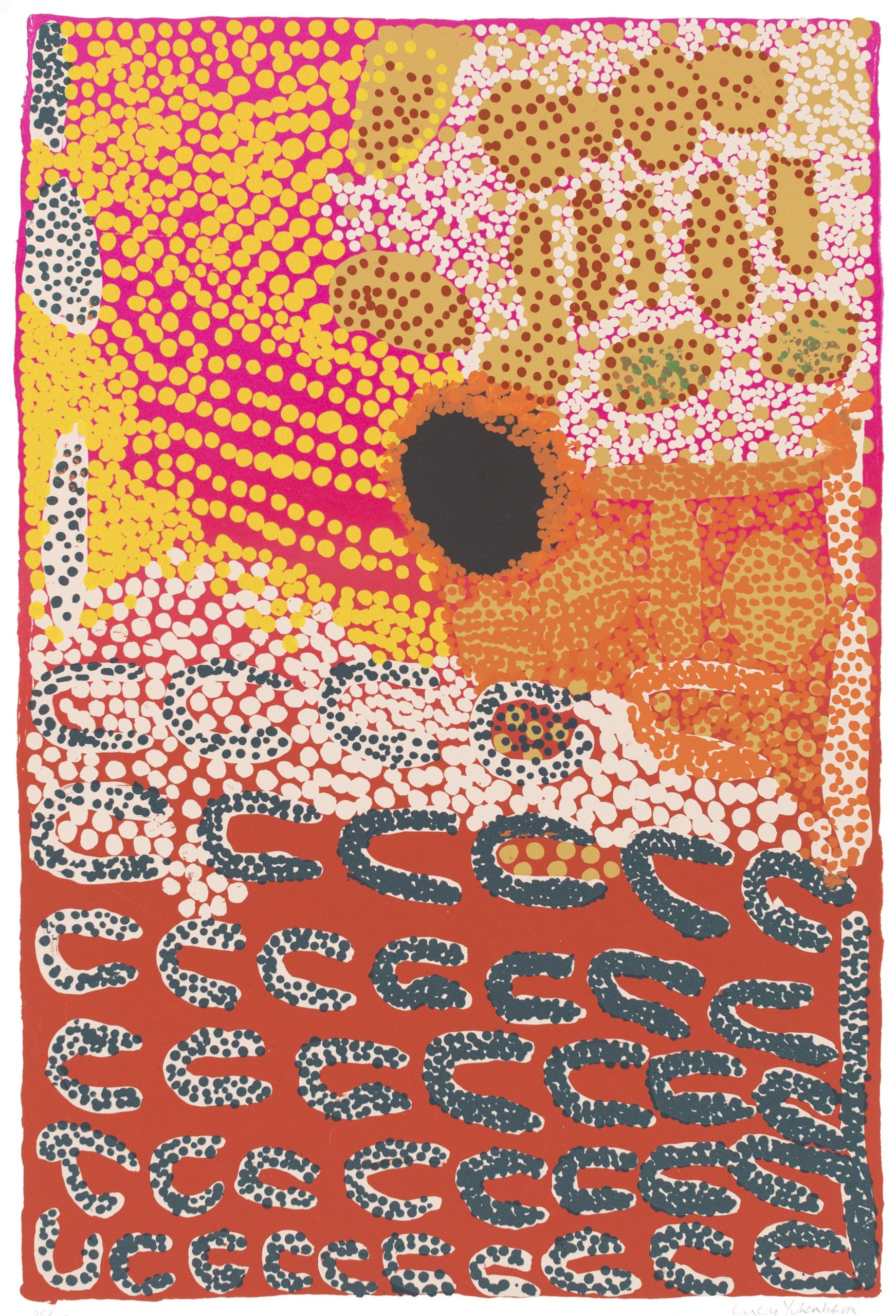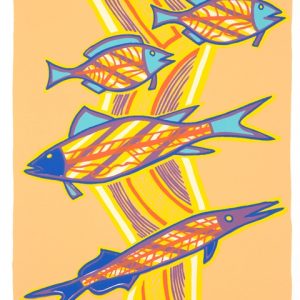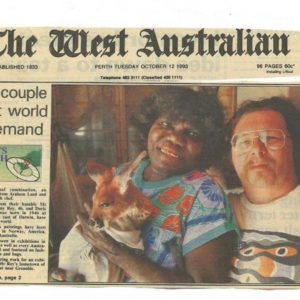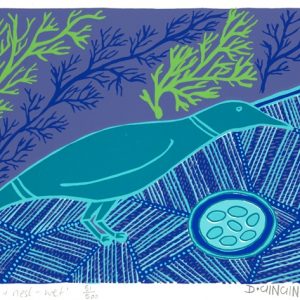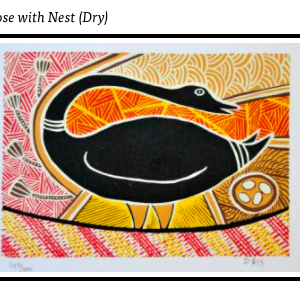Description
Details
- Type: Screenprint
- Edition: 99
- Paper: Magnani Pescia 300gsm White
- Size: 750 x 550 mm (image), 760 x 560 (paper)
- Printer: Theo Tremblay, Editions Tremblay NFP Bungendore, NSW, 2002
Story
This print depicts some of Lucy’s country far to the south of Balgo, in the Great Sandy Desert. This country is known as Punyanita and is named for the soakwater, or tjurrnu, featured in the centre of the painting. Tali, or sand dunes dominate the landscape of the area, while purra (bush tomato), tjunta (bush onion) and karnti (bush potato) are commonly found here. The small dots depict the variety of these foods. The U shapes represent women performing ceremony to ensure the bush foods will remain abundant and maintain their strong connections with country.
Artist Biography: Lucy Napanangka Yukenbarri
Lived: 1934-2004
Language group: Kukatja
Lucy Yukenbarri was a respected senior custodian with a vast knowledge of the waterholes in the Great Sandy Desert. She began painting in 1989. Lucy’s early works followed standard Balgo Hills methods of forming lines by means of rows of dotting and of outlining icons in a similar way. A quietly creative artist, she then moved to another technique using single colour fields of dotting, later going on to a next step of painting her dots so closely together that they converged, creating dense masses of pigment on the surface of the canvas. This, together with her exploration of the visual possibilities of black icons for waterholes and soakwaters and of dark green and blue, gave her work a distinctive style, producing effects unique in desert Aboriginal art. As a result, her work became sought after in the marketplace.
Yukenbarri’s later works were boldly covered in thick paint. She concentrated on painting the soaks and rock holes of her country, also the numerous types of bush food including Kantilli (bush raisins) and Pura (bush tomato).
She laughingly described herself as a “wild one” in her youth, running away from ceremonial business into the bush. There is also the story of the long walk in from the desert to the mission when they would stop at the wells along the track to pump for water. Once at the mission, she helped make the bread and later began painting. She travelled extensively with her painting (Melbourne, Adelaide, Sydney, Canberra, Perth, Darwin, Kununurra), however preferd to stay in Balgo with her family. Lucy Yukenbarri held many ceremonial responsibilities in the keeping of traditional law.
Solo Exhibitions
2003, Always Together Painting, Alcaston Gallery, Melbourne.
1999, Tjurrnu: Living Water, Alcaston Gallery, Melbourne.
Collections
ArtBank, Sydney.
Berndt Museum of Anthropology, University of Queensland.
Campbelltown City Art Gallery.
National Gallery of Australia.
National Gallery of Victoria.
The Holmes a Court Collection.
Laverty Collection.
Kluge Ruhe Collection, USA.
Parliament House Art Collection.
Alice Springs Art Foundation, Araluen Centre.
Ken Thompson and Pierre Marecaux Collection.

